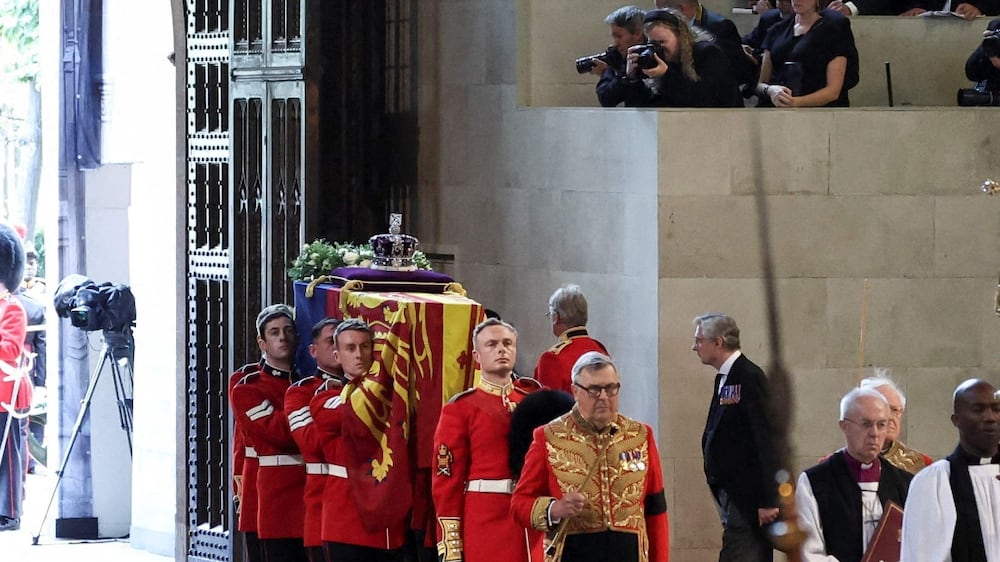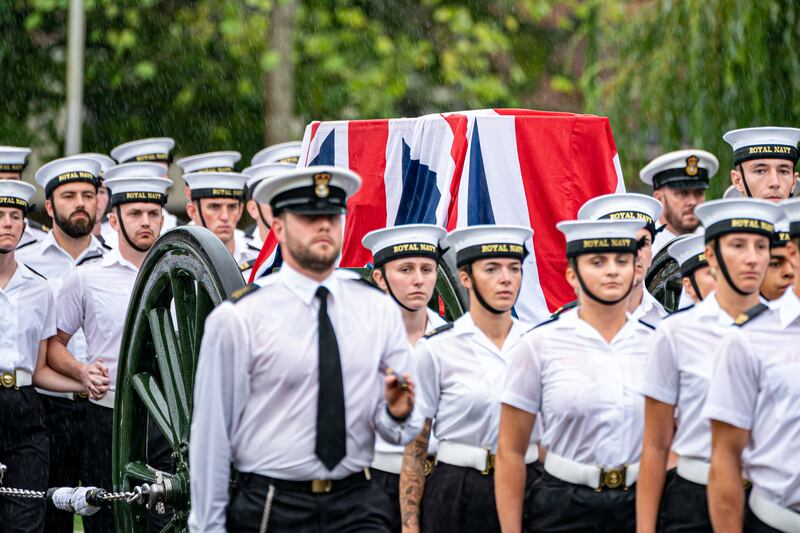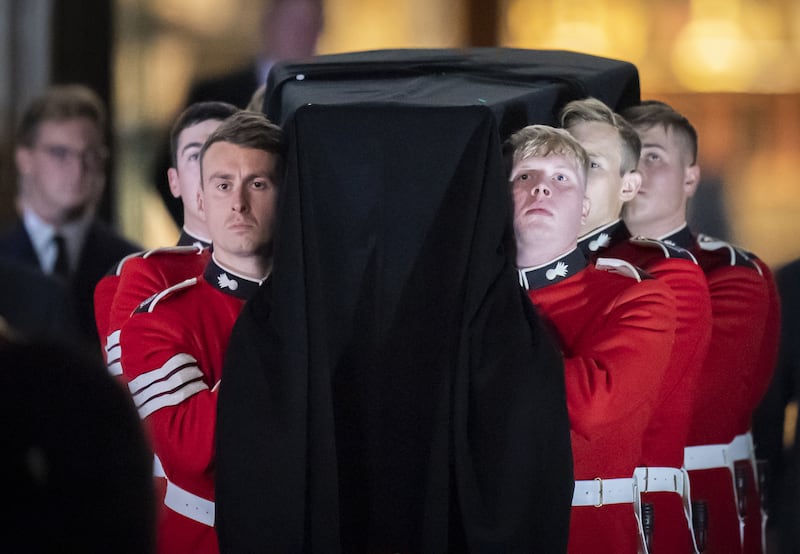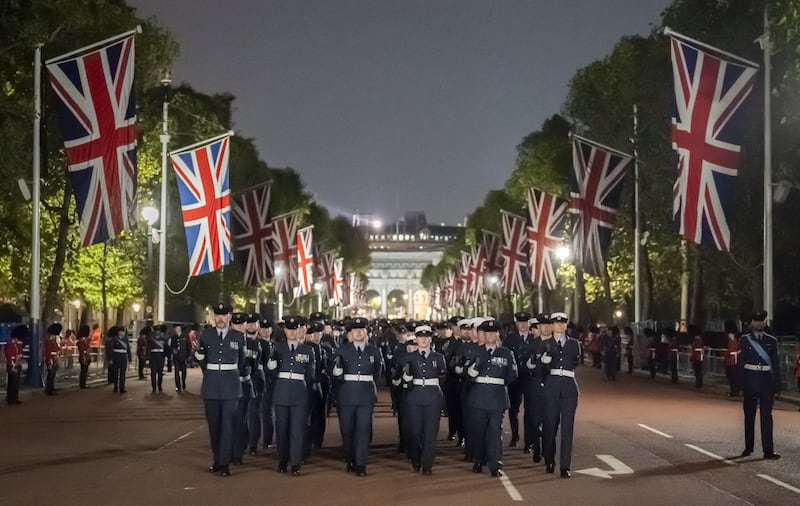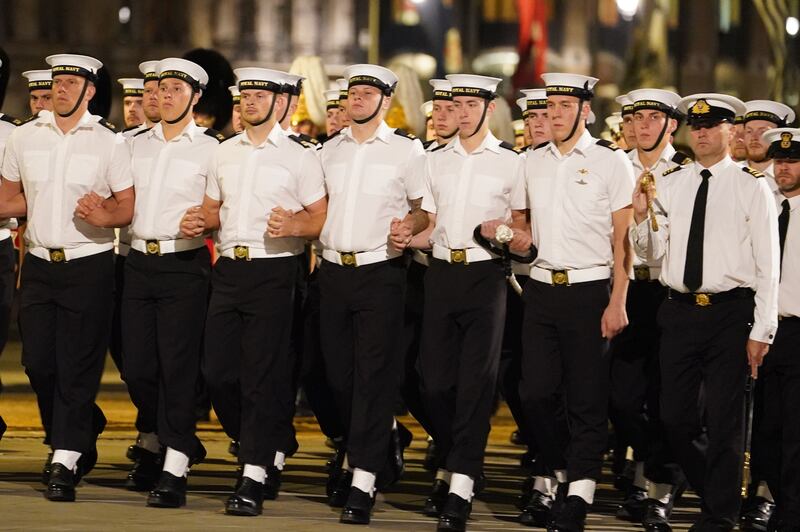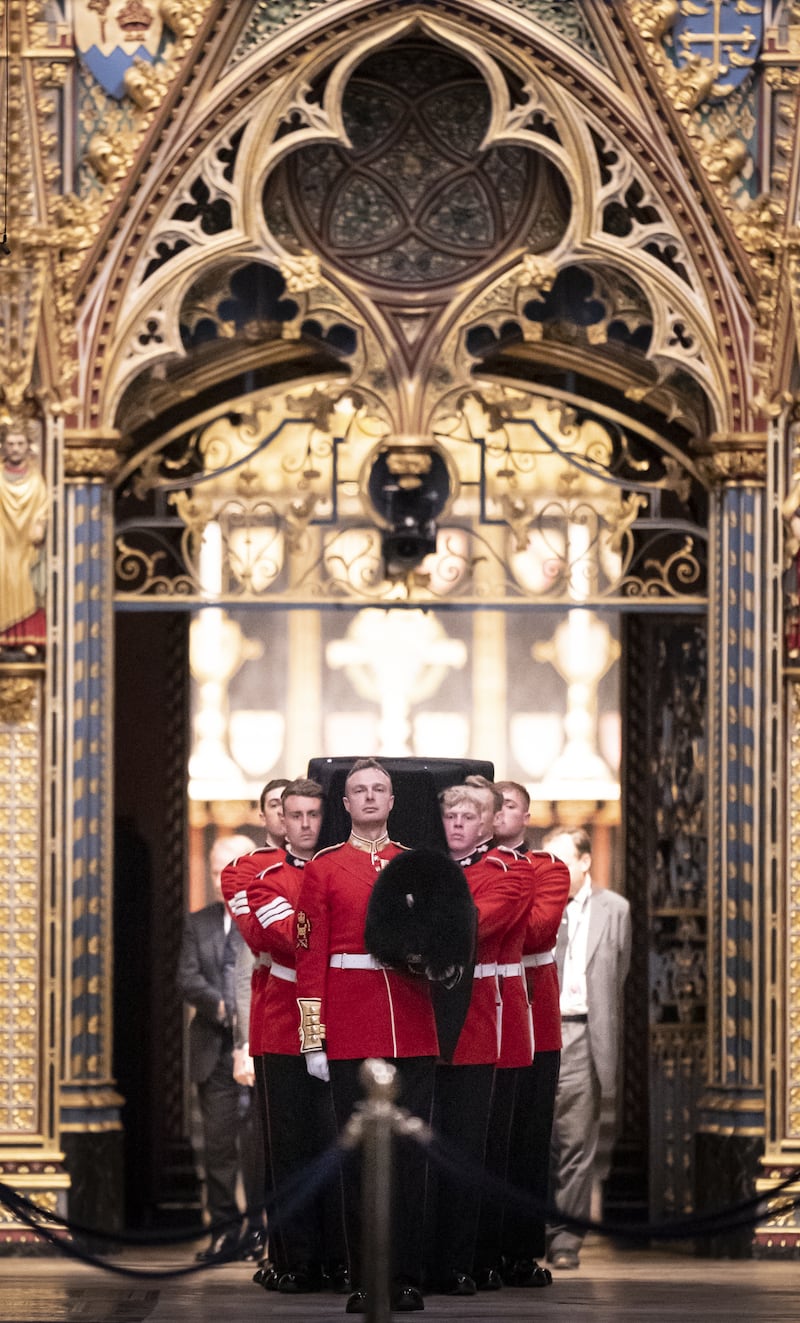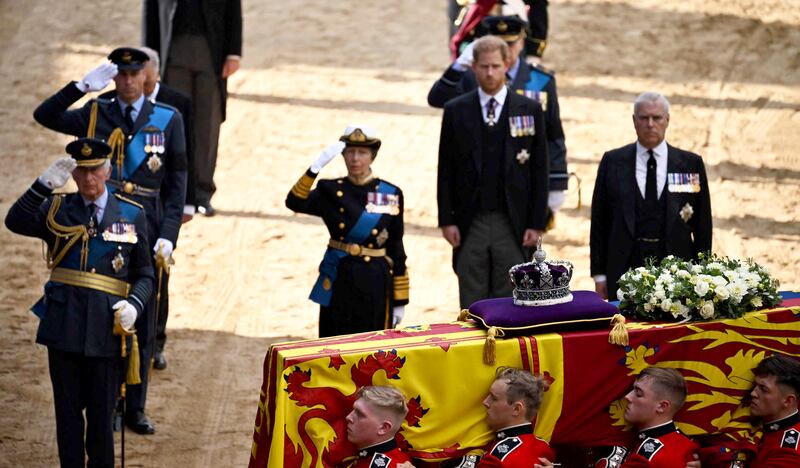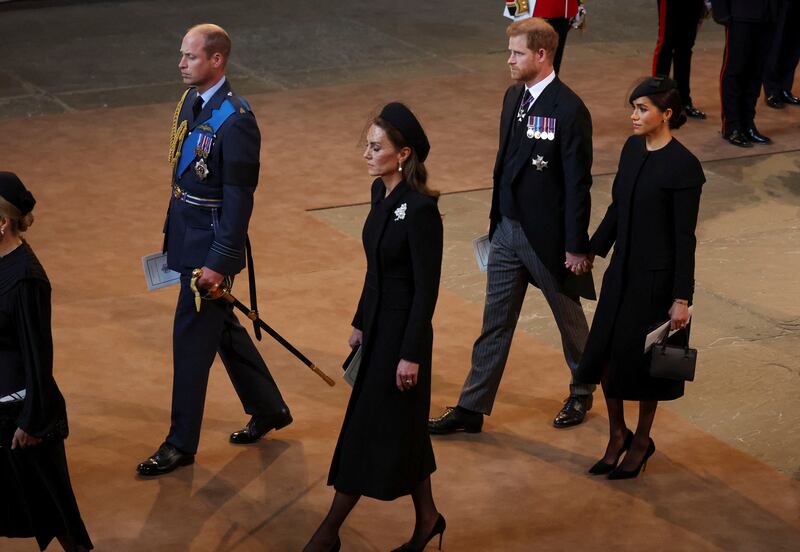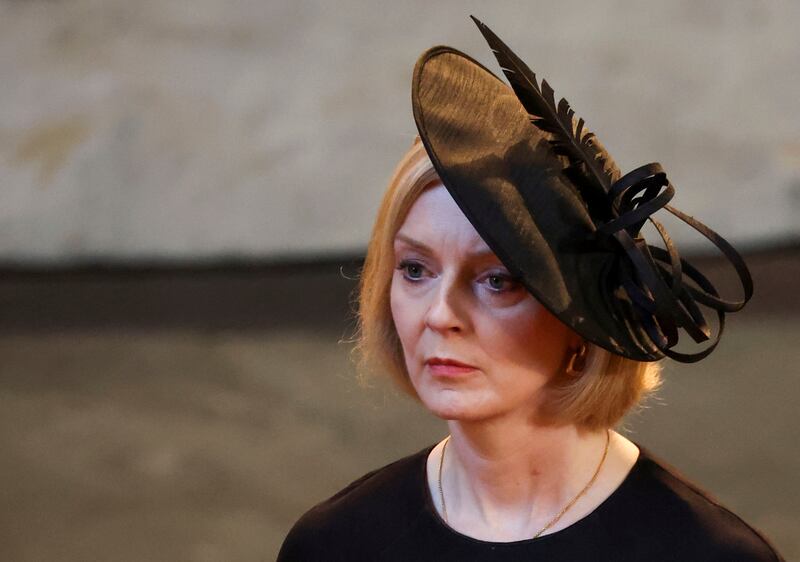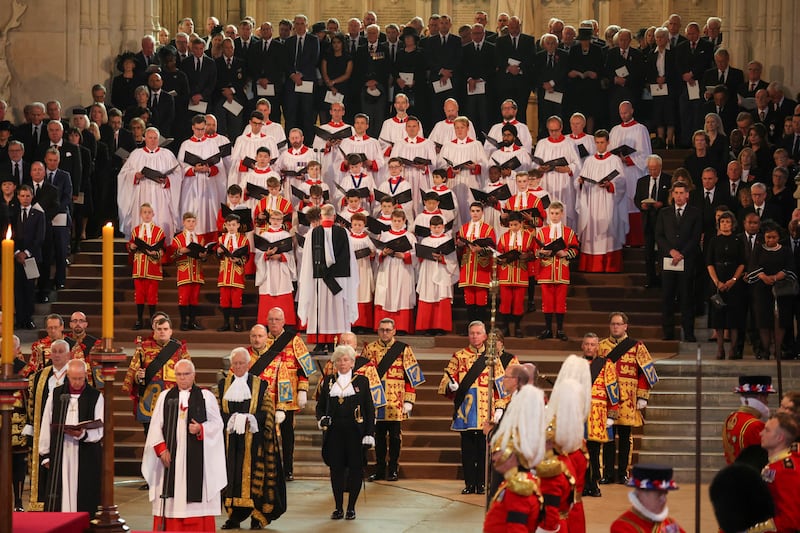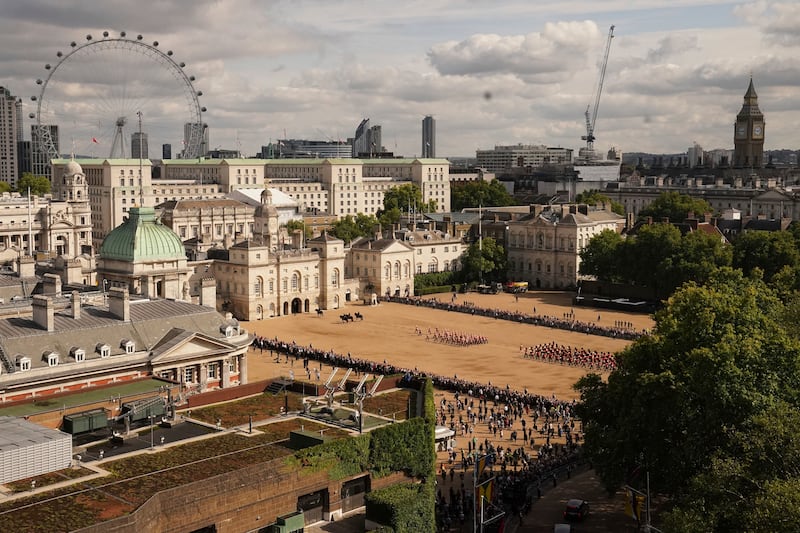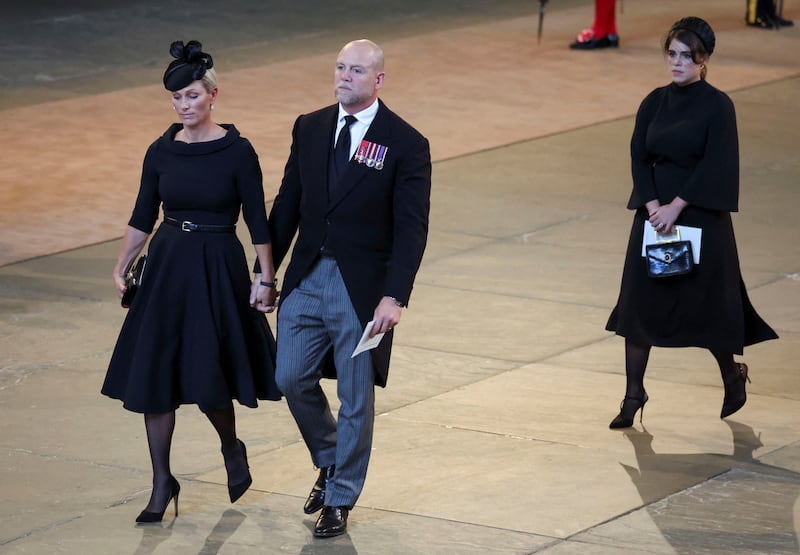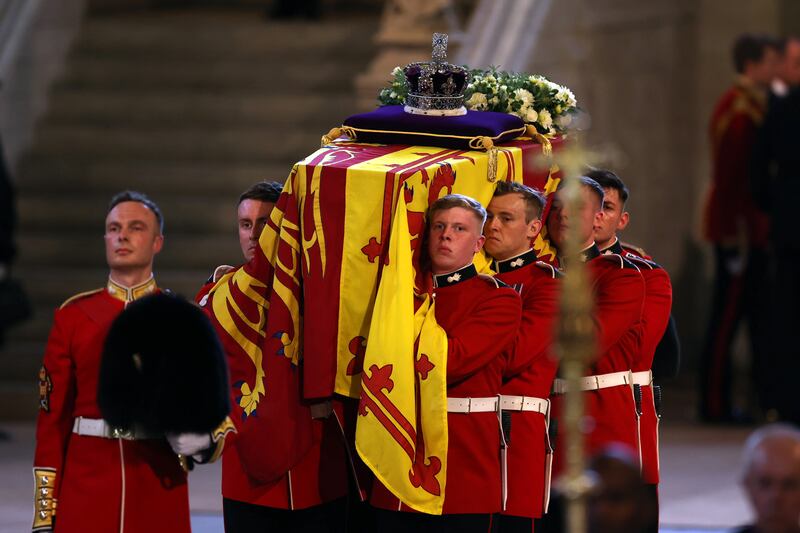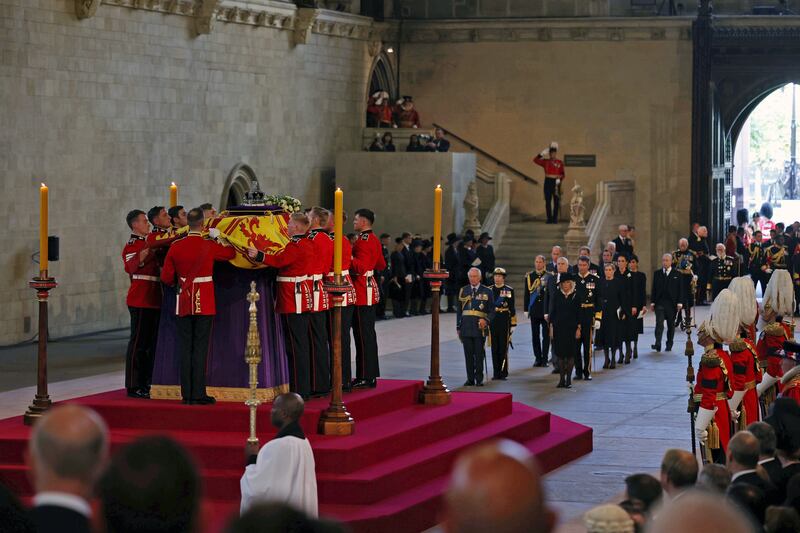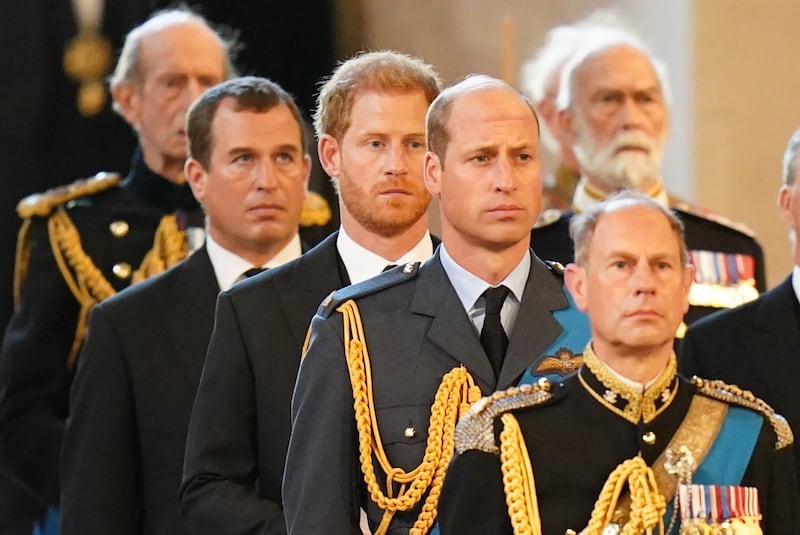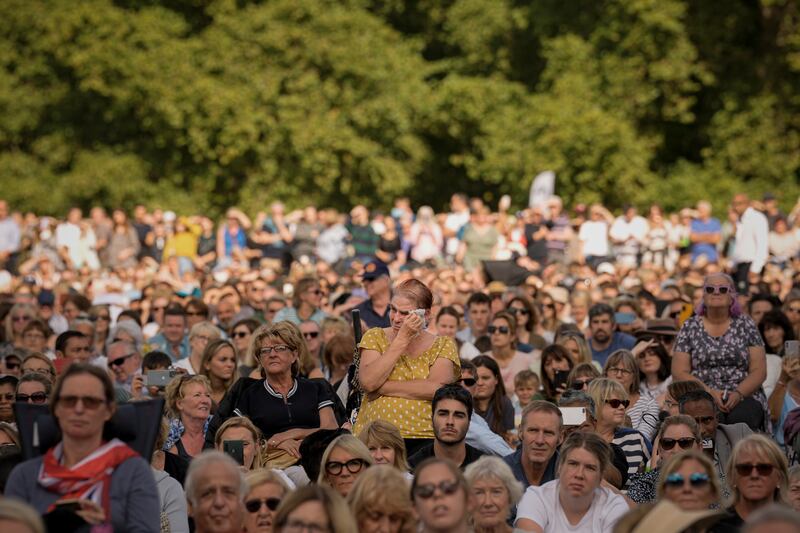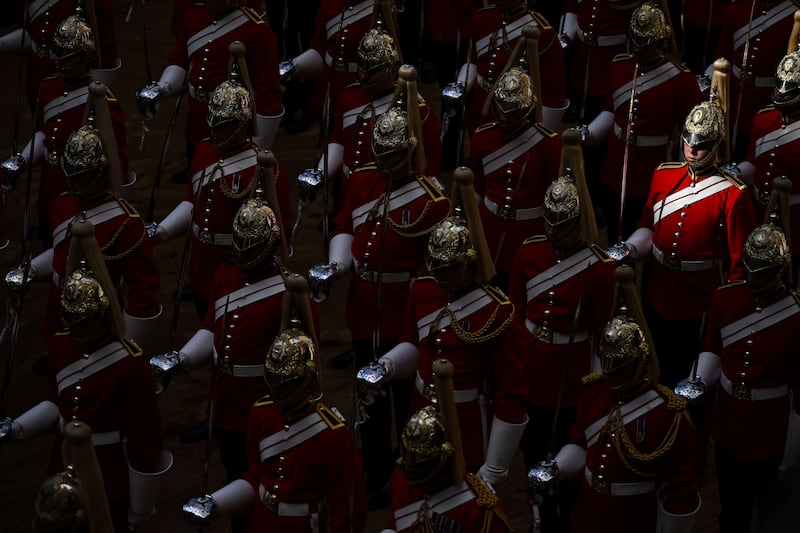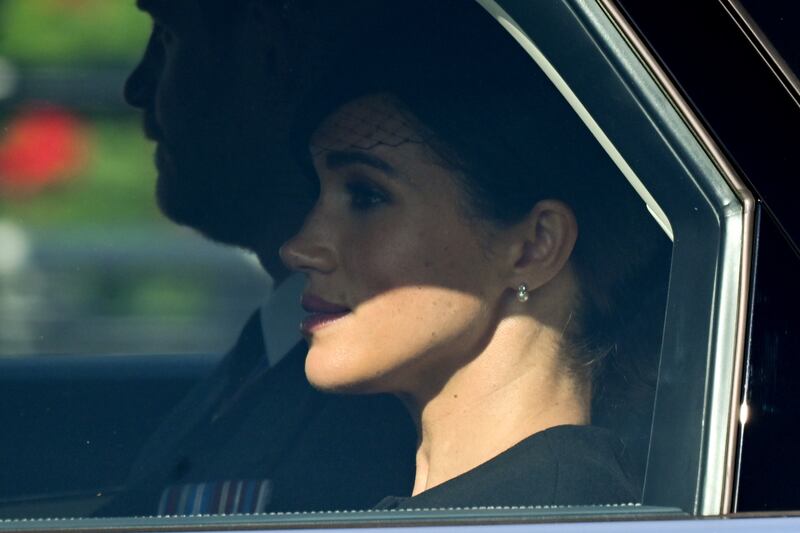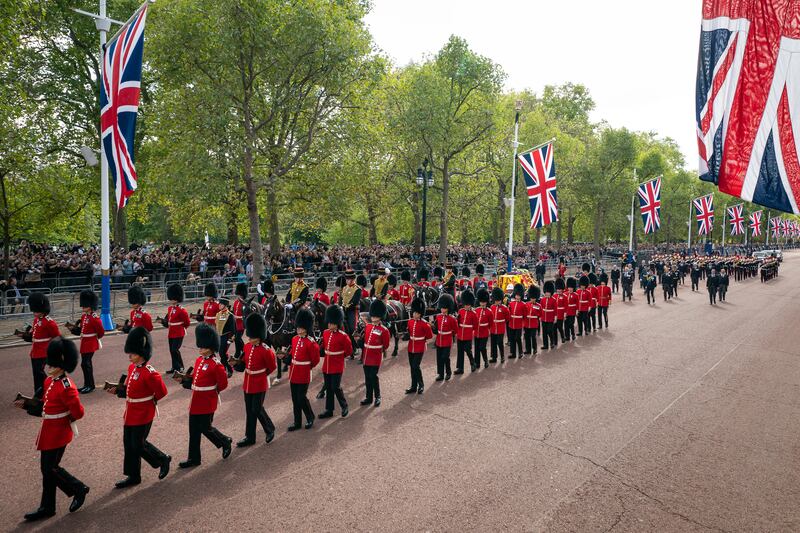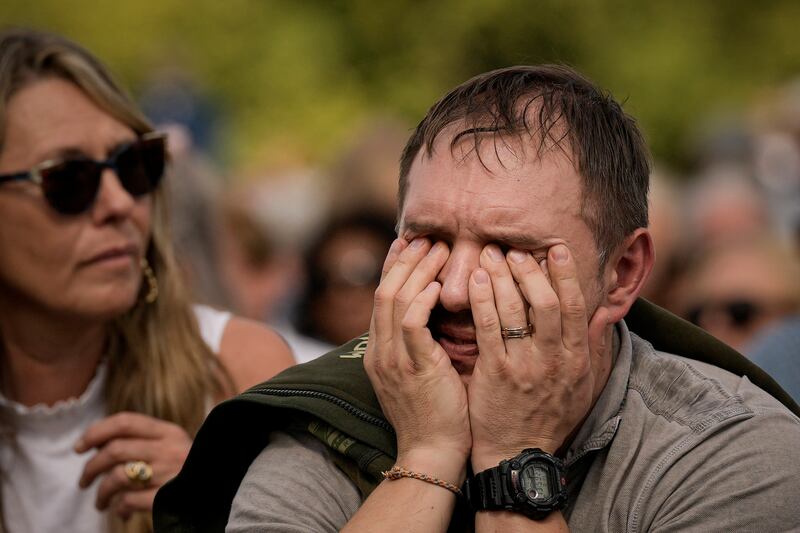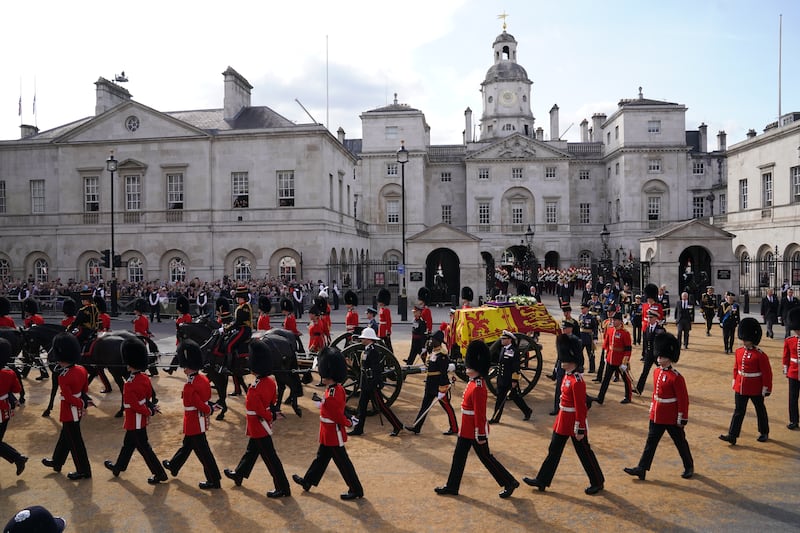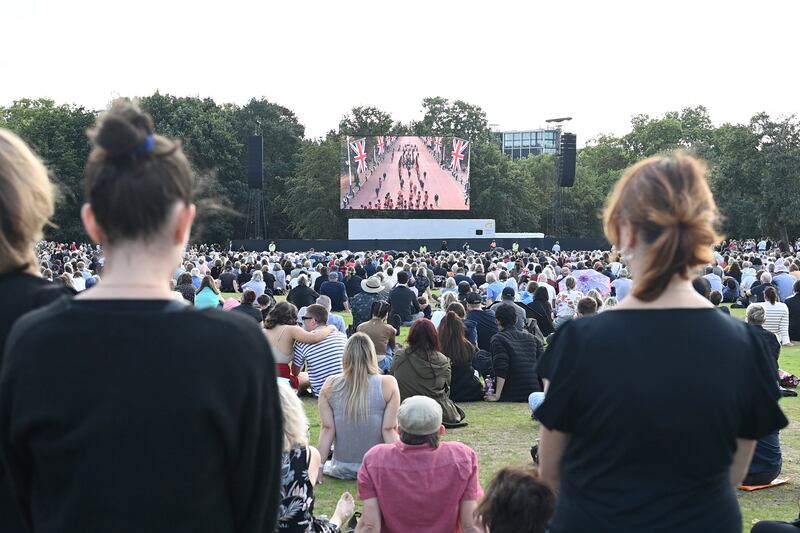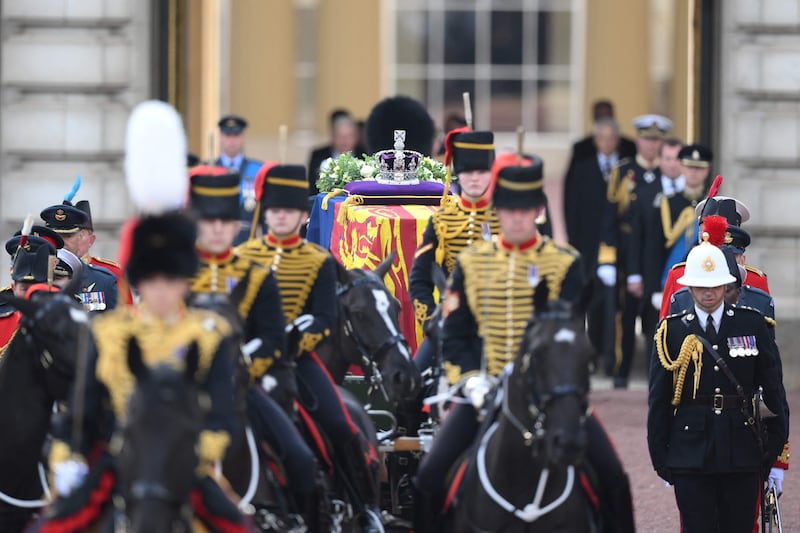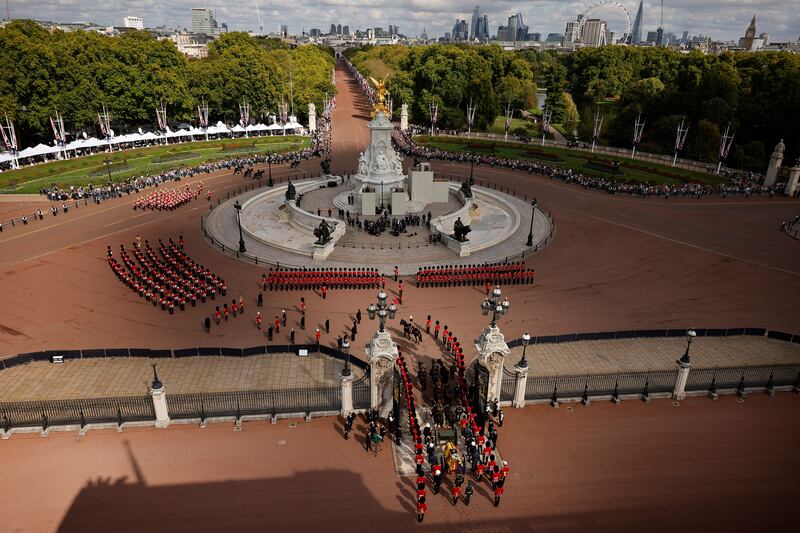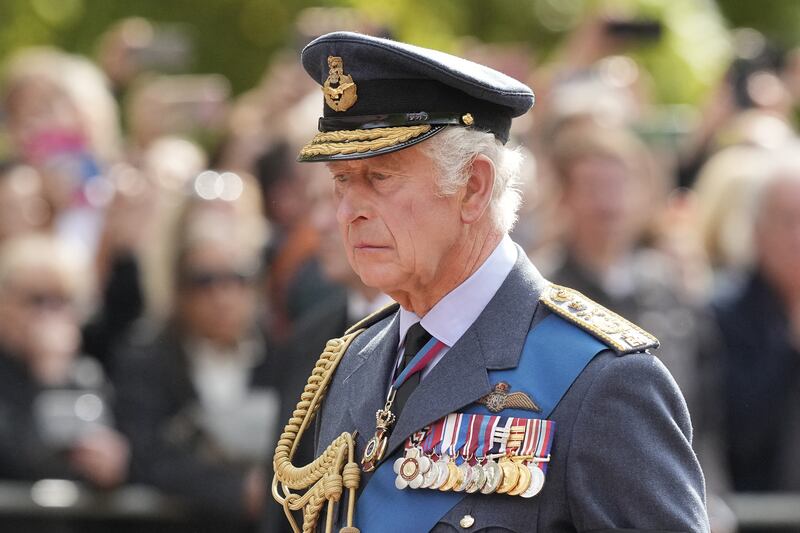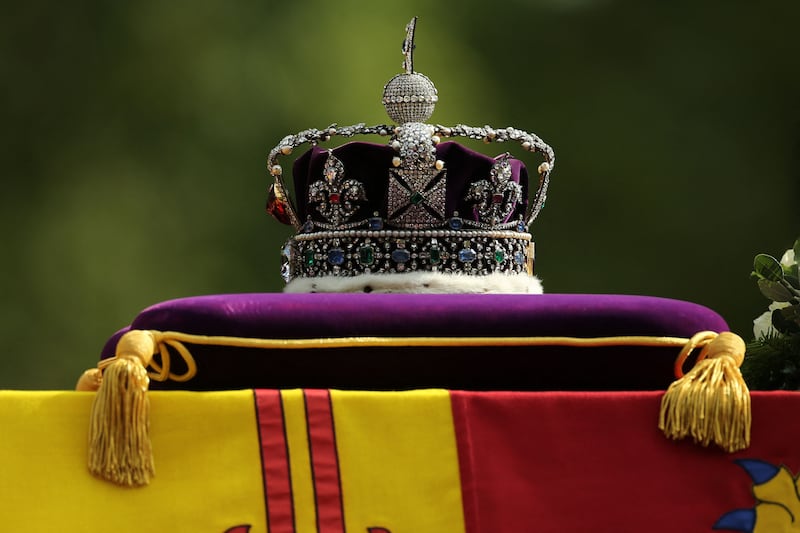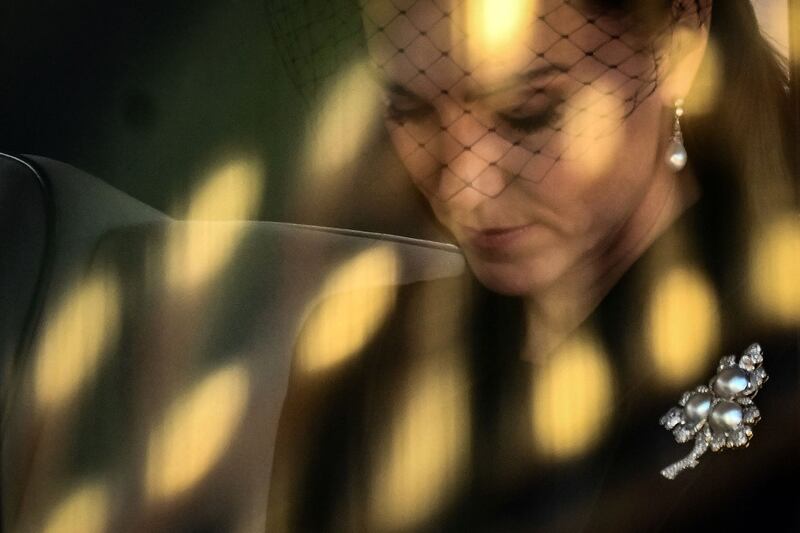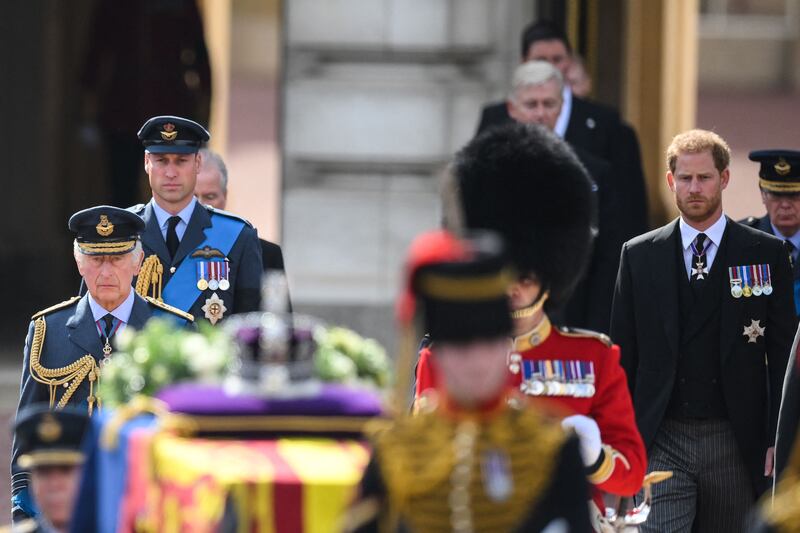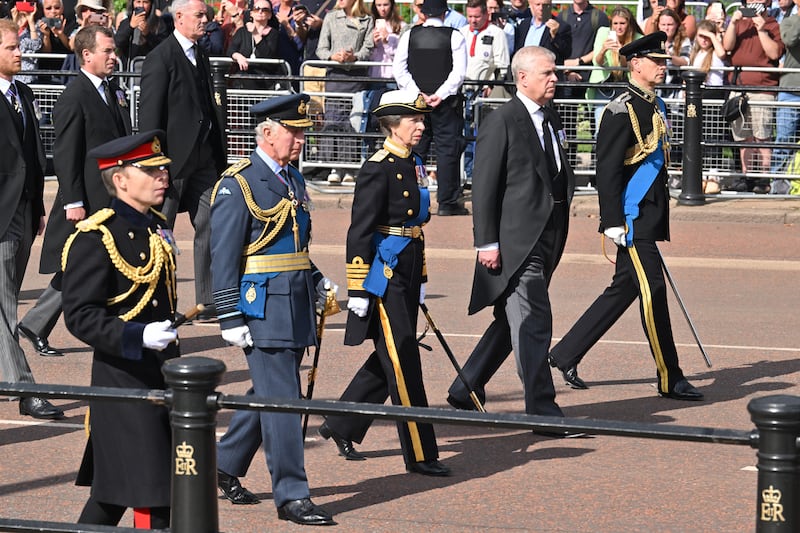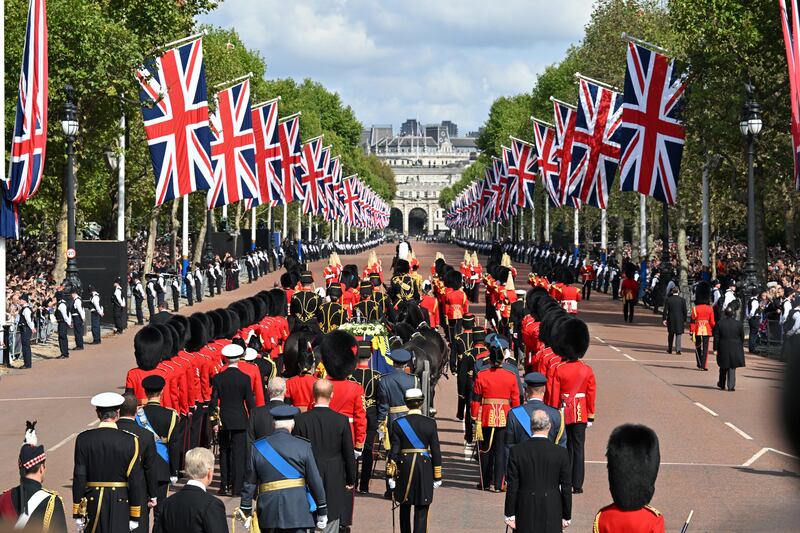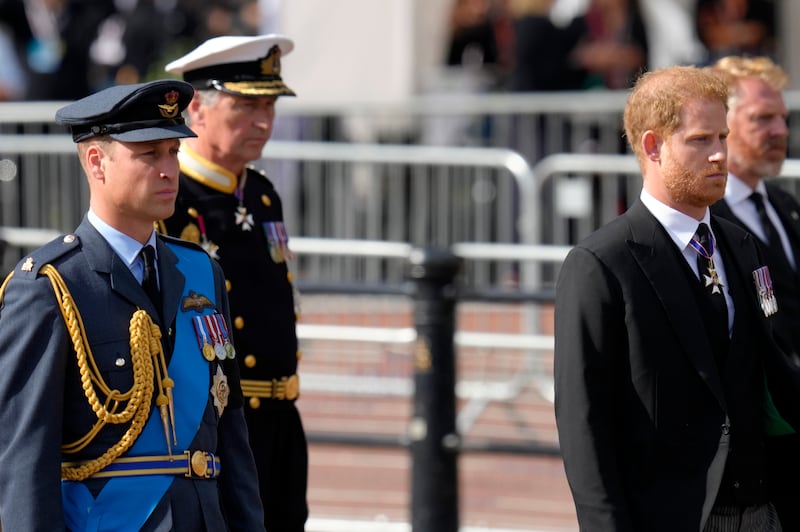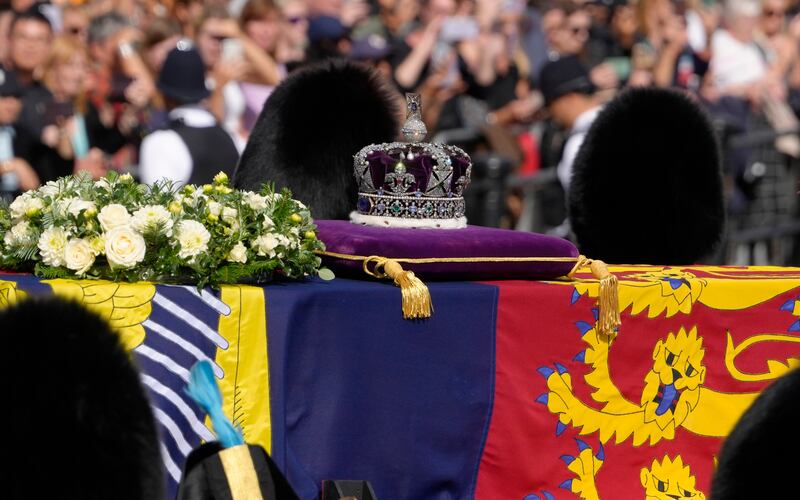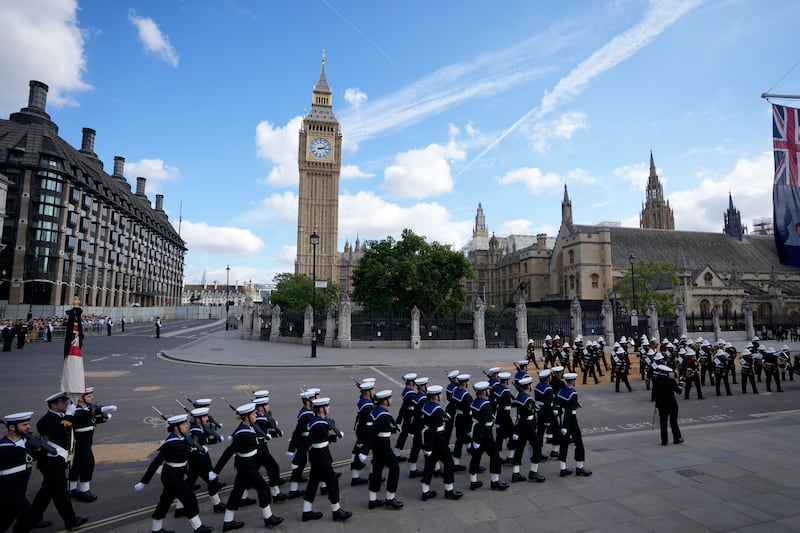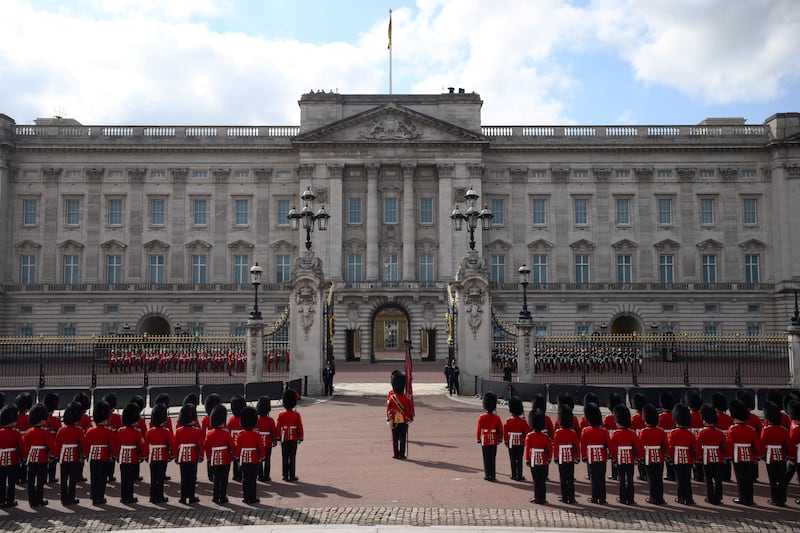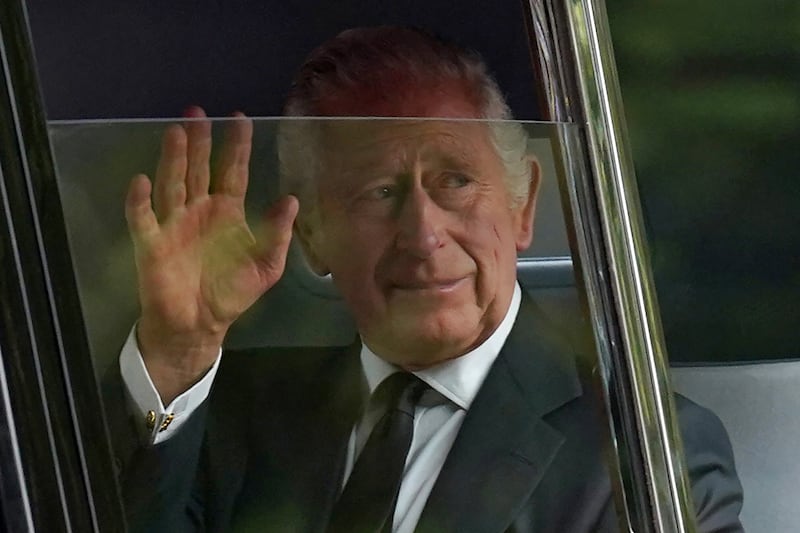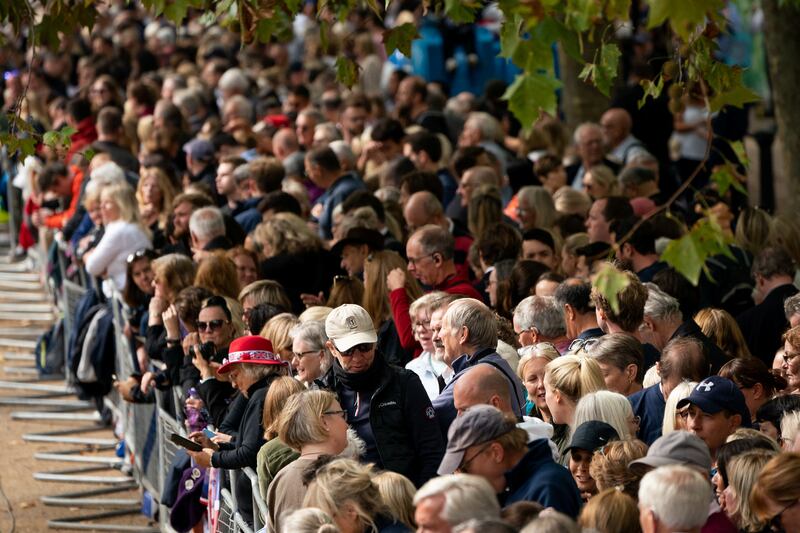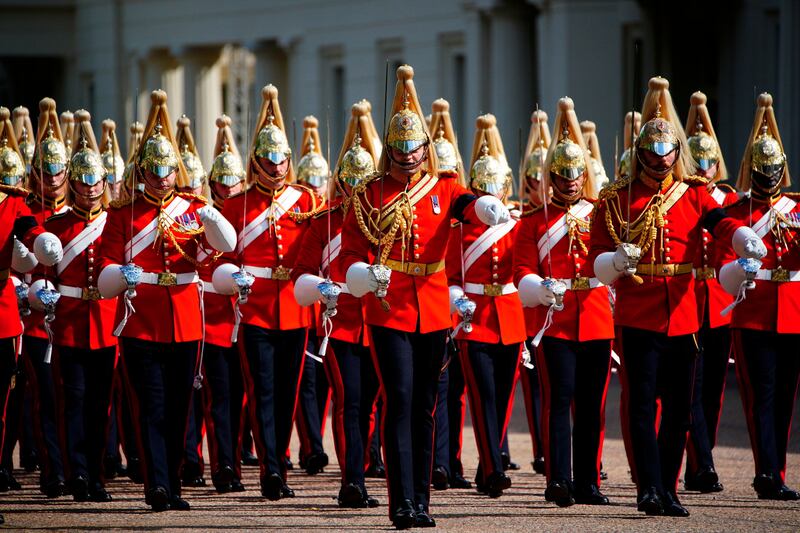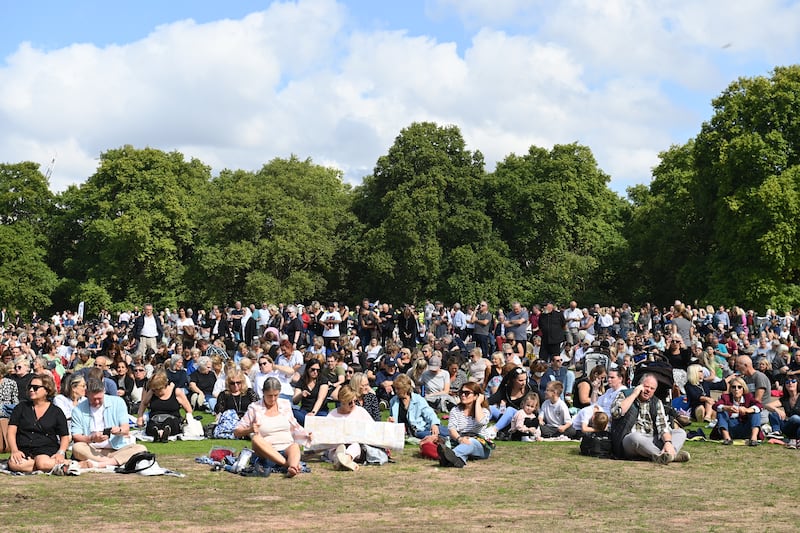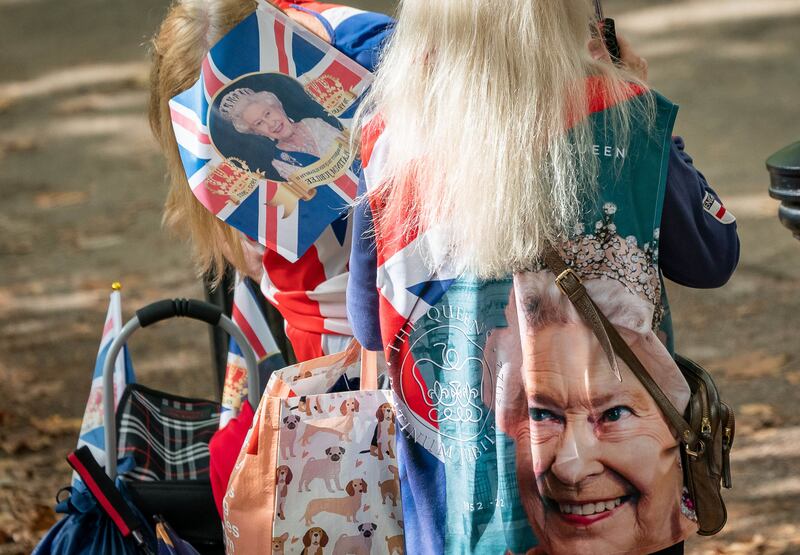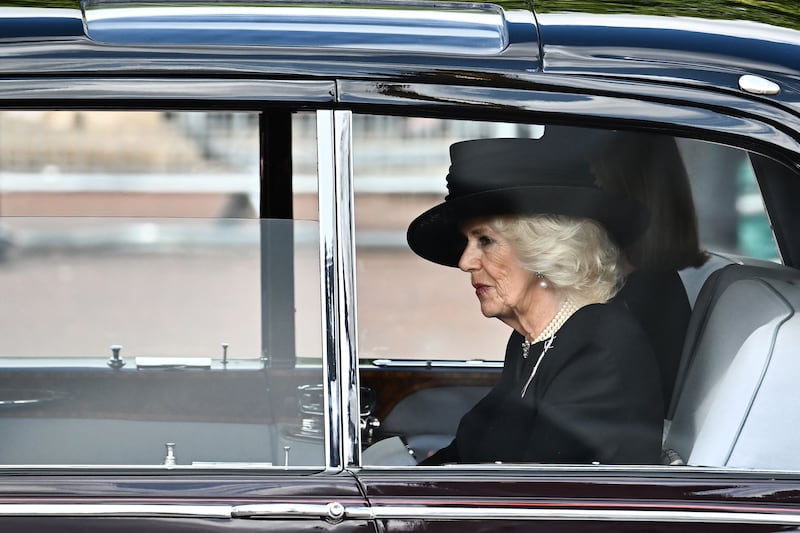Almost 100 sailors will tow Queen Elizabeth’s coffin on a 123-year-old gun carriage using white ropes at the funeral procession to Westminster Abbey in London on Monday.
It will be pulled by a team of 98 Royal Navy sailors known as the Sovereign’s Guard, while 40 sailors march behind the carriage to act as a brake, in a tradition dating back to the funeral of Queen Victoria in 1901.
On Wednesday, the coffin was taken from Buckingham Palace to Westminster Hall, within the Palace of Westminster, in a military procession with King Charles leading other royals walking behind. The queen is lying in state until early Monday, when the coffin will be taken the short distance to Westminster Abbey for the state funeral, which will be attended by 2,000 royals, world leaders, dignitaries and invited guests.
Final preparations for the funeral are taking place in London. Overnight, thousands of military personnel held a full rehearsal for the procession.
Funeral details revealed
Further details of the ceremony and the next five days were released by Buckingham Palace on Thursday.
The King, the Princess Royal, the Duke of York and the Earl of Wessex will mount a 15-minute vigil around the Queen’s coffin as it lies in state at 7.30pm on Friday.
On Monday morning, the doors of Westminster Abbey will open at 8am as the congregation begins to take its seats, three hours before the service begins at 11am.
The king will once again lead his family in marching behind the queen’s coffin when it is moved to Westminster Abbey.
The procession will be led by a massed Pipes & Drums of Scottish and Irish Regiments, the Brigade of Gurkhas and the Royal Air Force, featuring 200 musicians.
Moving elements of the funeral will include the sounding of The Last Post at 11.55am as the service nears its end, followed by a two-minute national silence which will be observed by the abbey congregation and by millions across the UK.
After the funeral, the king and members of the royal family will walk behind the queen’s coffin to Wellington Arch when it leaves Westminster Abbey, before it is driven to Windsor on the state hearse.
It will move from central London to Windsor, on a route that has not been disclosed by the Palace, but the hearse will travel down the famous Long Walk to the castle.
An estimated 800 people, including members of the Queen’s Household and Windsor estate staff, will attend a committal service at 4pm in St George’s Chapel, Windsor Castle.
Queen Elizabeth will be interred with the Duke of Edinburgh in King George VI’s Memorial Chapel in St George’s Chapel, Windsor Castle, in a private service at 7.30pm.
Time to rehearse
The rehearsal took place before sunrise on Thursday morning, during which the State Gun Carriage, bearing an empty black coffin, travelled from Westminster Hall, on to Westminster Abbey, and then through central London.
Hundreds of mourners who had waited in line overnight to visit the late monarch lying in state left Westminster Hall to see the thousands of military personnel in ceremonial uniform taking part in the preparations for Monday’s event.
The sound of bagpipes began at 2.45am, signalling the start of the procession and echoing through the quiet streets of London.
Four soldiers stood either side of the coffin as it was taken into Westminster Abbey, where indoor procedures were also rehearsed.
The procession continued to play in the half-light, and Beethoven’s Funeral March and the hymn Jerusalem could be heard before the sun came up.
Despite the time of day and the extensive road closures, a crowd gathered to watch.
Aidan Conway, from Islington, watched the rehearsal and told the PA news agency: “I was in the West End at the theatre and I went for a little night cycle just down The Mall out of interest, maybe to see the flowers.
“A policeman told me there was going to be a rehearsal at 02.30, helpfully, so I thought I’d stick around.
“It’s peaceful. It’s not the real thing, but I think it’s almost closer than you’re going to get to the real thing unless you’re going to queue for a day.”
The state funeral will take place in Westminster Abbey at 11am on Monday.
A committal service will then be conducted in St George’s Chapel in Windsor.
Tradition began with Queen Victoria
As with much of the proceedings surrounding the death of the queen, and the accession of King Charles, tradition will play a huge part in the funeral.
In 1901, Queen Victoria’s coffin was to be carried on the gun carriage through the streets of Windsor but in the bitter cold of that February day, the horses which were going to pull it panicked and reared up, threatening to topple the coffin off the carriage.
Captain Prince Louis of Battenberg — who would become First Sea Lord of the Royal Navy — intervened and suggested to the new monarch, King Edward VII, that the senior service step in.
Once this was agreed to, the horses were unharnessed and improvised ropes were attached to the gun carriage, which weighs 3,000kg (2.5 tonnes), and the team of sailors was brought in to ensure the coffin was carried safely for the rest of the route.
Only nine years later, at the funeral of Edward VII, the new routine became enshrined as a tradition which has been followed at all state funerals since, including those of George V and VI, Sir Winston Churchill and the ceremonial funeral of Lord Louis Mountbatten, the son of Capt Prince Louis of Battenberg.
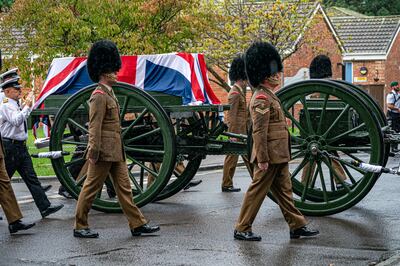
Nowadays, the gun carriage is kept under environmentally controlled conditions at a temperature of between 16°C and 20°C and at humidity of between 40 per cent and 70 per cent to prevent it becoming dry and brittle and to stop fungal growth.
It was built at the Royal Gun Factory at the Royal Arsenal in Woolwich to carry the standard light field gun of the Army at the time, the breech-loaded 12-Pounder, but was converted into a ceremonial gun carriage by fitting a catafalque — a raised platform with horizontal rollers for moving the coffin.
The gun carriage is stored at HMS Excellent on Whale Island in Portsmouth where its upkeep is the responsibility of custodian Lieutenant Commander Paul “Ronnie” Barker.
He told the PA news agency: “We try to keep it at a constant temperature and weekly I go in and turn the wheels a quarter turn to stop them from going egg-shaped with gravity and lots and lots of polishing.
“In preparation for this event we have increased that polishing 10-fold — if you look at the gun carriage, the barrel itself hasn’t been chromed, that’s years and years of polishing and lots and lots of elbow grease.
“I tend to get upset if I see a new scratch so I have probably crawled over every single part of it in the past four or five years.”
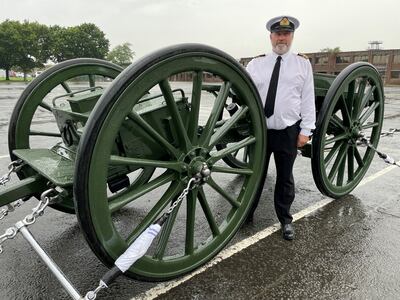
Stephen Prince, head of the Naval Historical Branch, who has been advising the funeral planners, said the navy planners had been keen to follow the traditions of state funerals.
He said: “We advise on what has been done before, not necessarily as a constraint completely but just so we know where we are starting from, so it’s not an immobile process but you want to have a good sense of where you come from.”
Mr Prince said that the queen had been closely connected to the Navy. “It would be really hard to come up with anybody having closer links with the Royal Navy because the queen is the daughter of a naval officer, she married a naval officer and two of her sons then serve as naval officers,” he said.
Privilege to serve the queen
Royal Navy personnel from the most junior sailor to the highest-ranked female officer have described their “honour, privilege and duty” to be involved in the funeral procession.
Up to 1,500 sailors are set to take part in the state funeral, which will include representatives from all three armed forces.
During earlier rehearsals at HMS Collingwood in Fareham, Hampshire, planners and parade staff spoke of their pride at being chosen to take part in the major event.
Commander Steve Elliot, a staff weapon engineer officer, previously commanded the first Navy detachment in 375 years to perform guard duties at St James’s Palace, Buckingham Palace, the Tower of London and Windsor Castle.
His immediate predecessor in that role was Sir Walter Raleigh.
Queen Elizabeth II's coffin procession from Buckingham Palace - in pictures
Cdr Elliot, who will be part of the gun carriage contingent, said: “I will have the sombre honour of marching in front of the gun carriage carrying her majesty’s body on her final journey.
“Something perhaps a little more poignant for me is it will be my last action in uniform after 32 years’ service before I actually leave the Royal Navy.”
Rear Admiral Jude Terry, director of people and training, who is responsible for the Navy’s funeral planning and is the its first female admiral, said: “For everybody within the parade, they will have their moment of reflection and honour to be able to have served her, as well as a moment of sadness. We will all feel a great deal of emotion; she will have meant so much to us all in very different ways, all of us will have been touched by her presence in some way.
Able Seaman Murray Kerr, 20, from Ayr, said: “It’s a great honour to be a part of her majesty’s funeral; it’s a great responsibility as well. This is going to be the biggest state event this century and I don’t think there will be another event like it.”
This is the moment Queen Elizabeth II left Buckingham Palace for the last time
